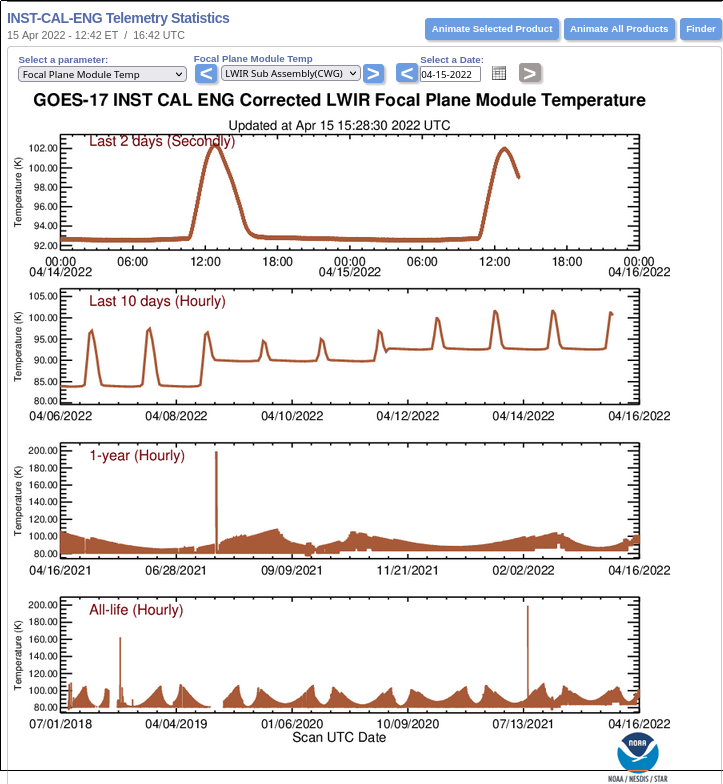GOES-17 Image Degradation due to a warmer Set Point temperature

During the current warm period for GOES-17, when the sun’s position leads to excessive heat build-up on GOES-17 because of the poorly-functioning Loop Heat Pipe, the Set Point temperature has been increased from 92.8 K. This change occurred on 11 April 2022 and it is scheduled to last for one week — the daytime ‘stripiness’ should relax on 19 April when the Set Point temperature changes back to a cooler temperature (90 K). The figure below (from this NESDIS/STAR link) shows Focal Plane Temperatures at different time scales. The Set Point change is apparent in the figure showing the last 10 days; a second Set Point temperature occurred on 9 April, but that one did have such a big effect on imagery. Note how the warmest Focal Plane Temperature has been increasing in the past 10 days.

You might ask: What is the Set Point temperature and why is it affecting these two bands? The cryocooler is a secondary cooling mechanism on GOES-R satellites (the Loop Heat Pipe is another cooling mechanism). Heat from the cryocooler’s operation actually warms up the satellite. So, warming the cryocooler set point decreases that thermal load. That warmer setpoint, however, means the focal plane of the ABI is warmer (as evidenced in the image above), and that warmer focal plane degrades select bands for all 24 hours. The benefit of a warmer cryocooler is that the number of nightly images completely missing related to the Loop Heat Pipe is not quite so long. In other words, for Band 10, all of the daytime images have some degradation, but the number of completely missing night-time images is decreased (compared to what would happen if the Set Point were cooler!). This pdf shows predictions for how warm the Focal Plane Temperature might get over the course of this year; note (on page 5) that the April heating period is the warmest, and that (page 6) Bands 10, 12 and 16 are the most affected bands.
Because Band 10 (and Band 12) data are used in some RGBs — such as the airmass RGB shown above — those RGBs will also be affected for this week.

